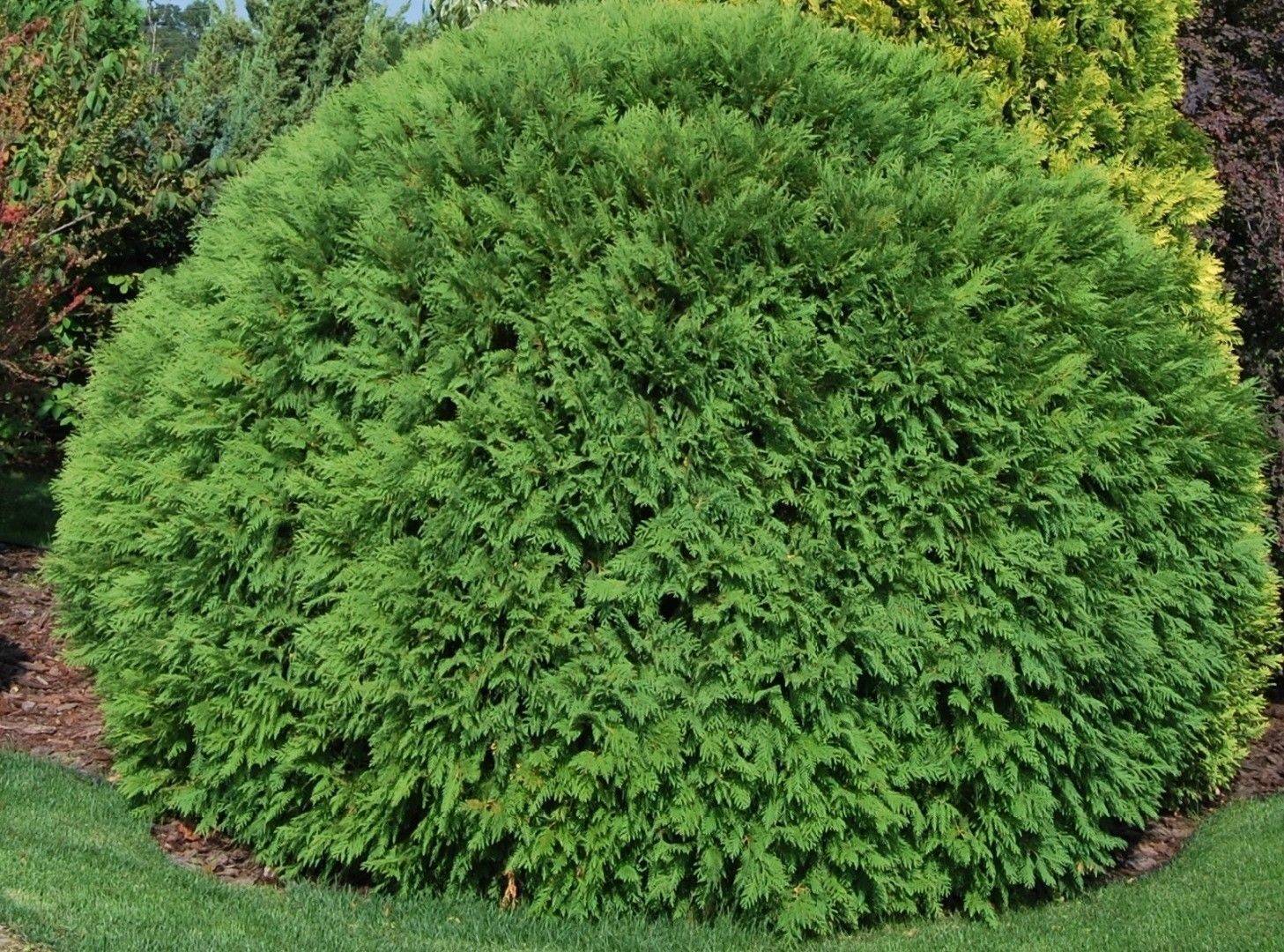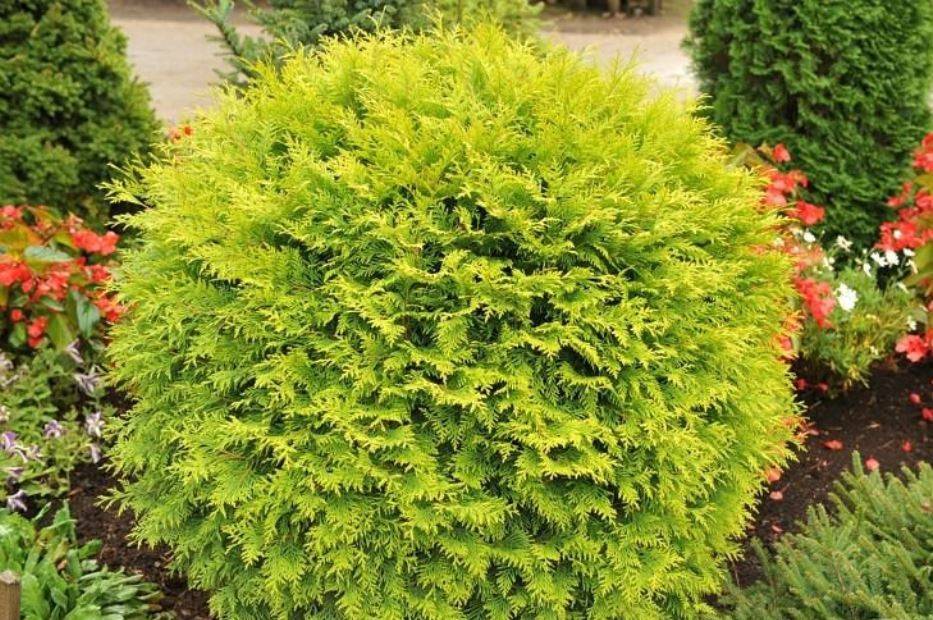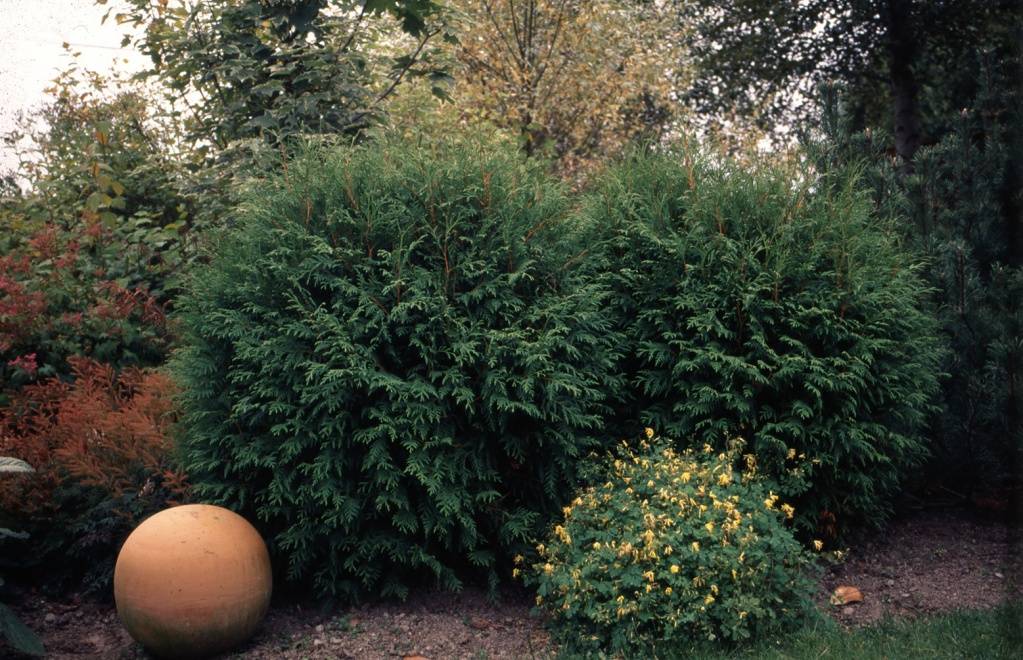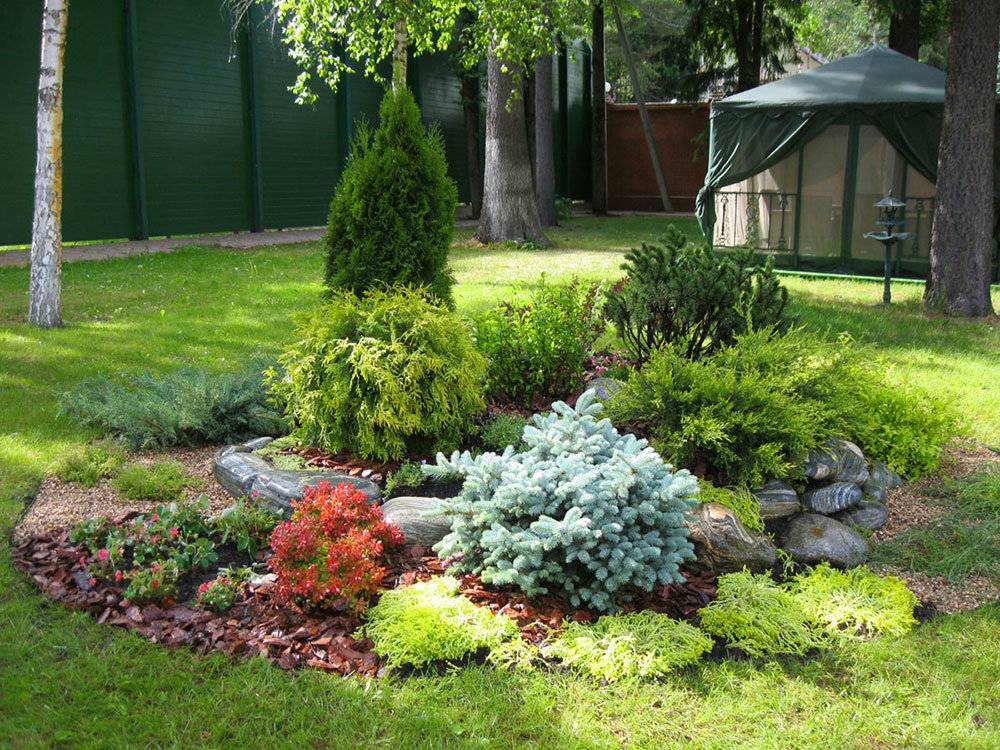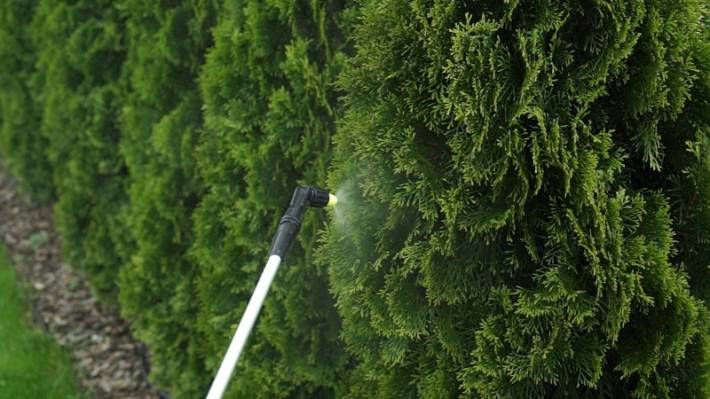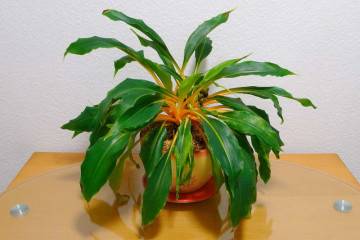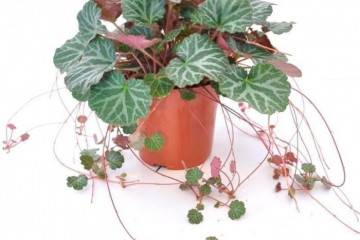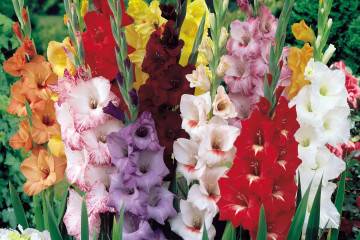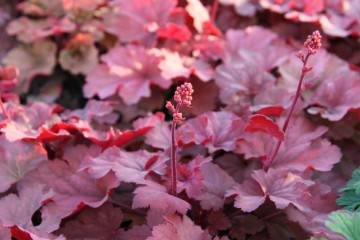Thuja Woodwardii western - description
Content:
Thuja Woodwardi is an unusual variety of western thuja, which has long been known to Russian and European gardeners for its interesting spherical shape. This variety is characterized by high resistance to environmental conditions and visual appeal. It looks great both as an independent plant and in group landscape compositions.
Description of thuja Woodwardii western
Thuja Wootwardii (the full Latin name is Thuja occidentalis Woodwardii) has been used by Russians for many years to decorate garden plots. This variety is the most popular of all Western varieties due to:
- excellent external data;
- a small annual increase, which saves time and effort spent on a haircut;
- ease of care;
- high frost resistance;
- maintaining year-round attractiveness.
Botanical description of thuja Woodwardi:
- dwarf hybrid. The maximum height of an adult plant reaches 2.5 m, but it will take several decades to reach it;
- young plants are spherical, adults are ovoid;
- as they grow older, the tree begins to actively grow in all directions, due to which the possible size of a thuja in width reaches 3 m;
- colors vary from light green to dark green shades;
- fruits - small brown cones, gathering in panicles over time.
Species features
Species features include extremely low annual growth. For 10 years, the bush reaches only 0.5 m in height. The width is proportional to the height, sometimes slightly exceeding it. This variety is able to grow in rather difficult conditions; it develops successfully even in the vicinity of busy high-gas roads. Another feature of this variety is that it can be grown in containers on a balcony or open veranda.
Combination with other plants
Thuja globular Woodwardi is often used in mixborders, but it is no less successful as a tapeworm. It looks great in both cases. If you plan to plant in garden plots, then it is better to choose the following neighbors for her:
- bright bushy roses;
- rhododendron;
- heather;
- any deciduous plants.
Woodwardii will look great in compositions with dwarf conifers. This will diversify the design of the site, give it an incredible decorative effect and add a touch of exclusivity.
How to properly care for Woodwardy thuja
Despite the fact that this variety of thuja is highly resistant to various environmental conditions, is picky, has a powerful root system, is able to grow in a shaded place, it is necessary to follow some rules for caring for it. This will allow the plant to fully grow and develop.
Thuja planting rules
Before planting the western thuja Woodwardii in open ground, you need to prepare a planting pit. If a young plant is planted, the depth of the hole should be about 70 cm. The soil should be loose and nutritious. A good drainage layer is laid at the bottom of the pit, since the plant does not tolerate stagnant moisture. In the soil for planting, you need to add 50 g of fertilizer for conifers, it must be thoroughly moistened with the addition of peat and compost. After planting, the soil around the plant is mulched.
Light and humidity requirements
Watering the Woodwardy thuja is an important part of ensuring a comfortable plant life. Under normal weather conditions, in summer, water should be watered once a week with 10-15 liters of water under each bush. In the heat, you need to water the thuja 2 times a week, and on rainy days, watering is not required at all. If there is a hose at the summer cottage where Woodwardy grows, you must not miss the opportunity to completely irrigate the bush. This will wash away excess dust that prevents the leaves from breathing, and give the bush a fresher and brighter look. Watering and spraying is done in the morning.
When choosing a place for Woodwardii, you should focus on protection from cold winds and strong drafts. With regard to lighting, this thuja is capable of growing in the shade, but it is better to provide it with more illuminated areas. However, in the open sun, its crown should be shaded to avoid burns.
Preparing for winter
Young seedlings of the first year of life must be covered for the winter. Of the materials, preference should be given to natural ones, for example, you can use spruce branches. The main thing is that the shelter allows air and the rays of the sun to pass through, since the plant itself is an evergreen, and the process of photosynthesis occurs throughout the year. Adult plants do not need shelter, but the crown can be tied up so that the branches do not break under the weight of the snow.
Pruning and shaping the crown
Thuja trimming options:
- forming;
- sanitary;
- anti-aging.
Forming pruning maintains the desired spherical shape of the crown. Thanks to it, you can set the direction of growth of the main shoots and their density. This pruning is done in mid-March before the growing season begins.
Sanitary pruning is done twice a year - in spring and autumn. It is necessary to refresh the plant, rid it of sick, dried branches. The main thing is to remember that each damaged branch must be cut off at the very base so that the disease does not spread to neighboring shoots.
With the help of anti-aging pruning, plants that are more than 3 years old are refreshed. Dried branches and shoots are removed.
How Tuya Woodwardi reproduces
Thuja Woodwardii propagates by seed, cuttings and bush division.
Growing from seeds
Cones are harvested from the mother plant in mid-autumn before the onset of cold weather. They are laid out on a cloth until completely dry and open. After the cones have opened, the seeds are carefully removed from them. They can be sown directly into open ground, but it is better to use a container first. Step-by-step instructions for planting thuja Woodwardi seeds in a container:
- The soil is filled up for planting. It should be soddy with an admixture of sand and peat.
- The soil is slightly compacted.
- Grooves are made in it, the distance between which is at least 6 cm.
- The seeds are evenly distributed in the furrows.
- From above, the sowing is covered with soil no more than 1 cm thick.
- The soil is moistened and compacted again.
Propagation by cuttings
Thuja cuttings are cut in early spring or mid-autumn. Their length should be about 15 cm. After cutting for 2 hours, they are placed in a container with a solution of the root growth accelerator. Then you can immediately transplant them into the greenhouse at a slight angle to the soil surface. Before planting, it is useful to treat the cut with a manganese solution or crushed charcoal. Periodically, the greenhouse should be ventilated and the soil should be moistened.
Dividing the bush
Before starting the procedure, you need to water the bush abundantly. Next, the Woodwardi thuja is dug up and divided into 2-3 parts with a sharp shovel or a small crowbar. If the roots are too strong, pruning shears should be used for separation. To prevent the occurrence of diseases, each part is disinfected with a special agent. The resulting parts are placed in different containers.
Possible diseases of Tui Woodwardy
Despite its high immunity, sometimes Woodwardi's thuja is exposed to diseases or insect pests. Major diseases:
- stem rot. The color of the leaves changes, and rotten areas appear on the bark. If this disease is detected, Woodwardii must immediately remove the damaged areas, and treat the resulting wounds with linseed oil;
- root rot is accompanied by a change in the color of the needles, drying out of the entire bush and softening its lower part. This disease is incurable, the diseased bush must be immediately removed along with the earthen lump in which it grew. This will help protect other nearby plants;
- brown mold. The branches turn yellow and die off, a blackish-gray cobweb bloom appears on them. Copes with this disease, and also prevents its appearance with the drug Fundazol.
Pests that bother Thu Woodwardi:
- spider mite;
- thuya false shield;
- aphid.
Insecticides cope with them. In order to prevent the appearance of insects, it is worth pretreating with special means in the second half of spring.
Western thuja Vudwari will adorn any landscape design, will always attract attention, emphasizing at the same time the beauty of plants that are in a single composition with it. This variety of thuja is currently in trend. It is popular with both summer residents and gardeners, and those who like to decorate their large suburban area. It will suit even owners of a large balcony or open veranda. Despite the beautiful outlandish name, Thuja Woodwardii is easy to care for and suits everyone, even a novice gardener.
